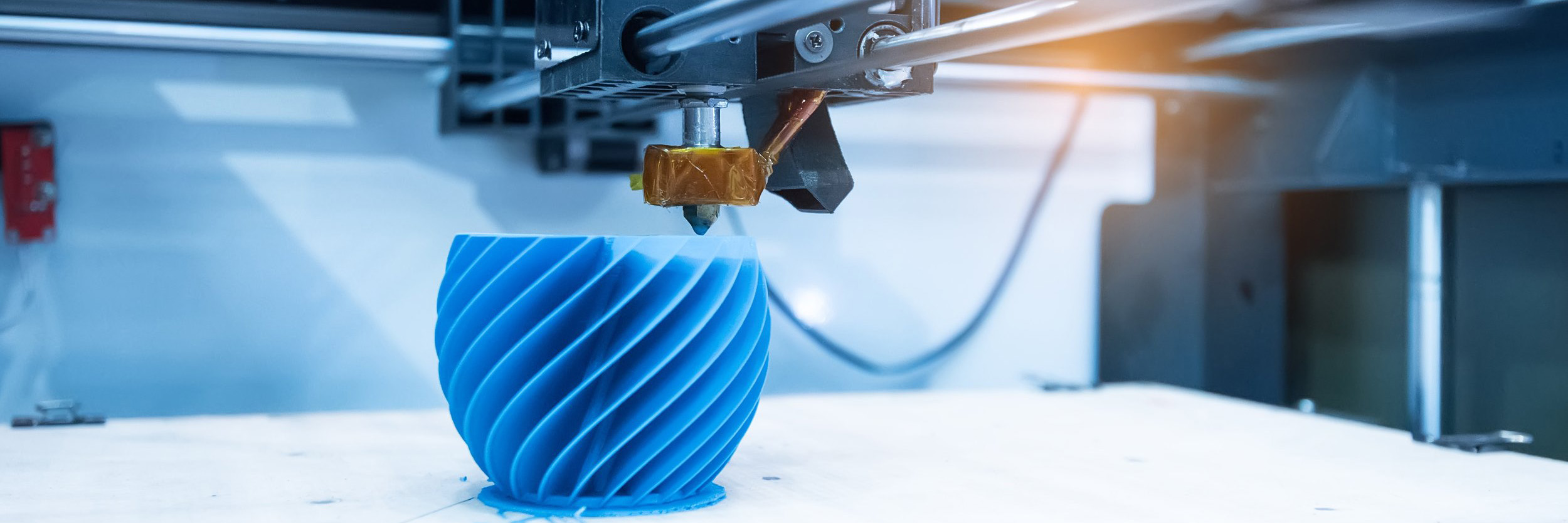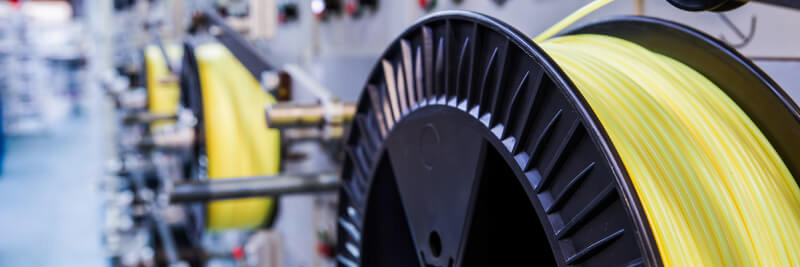FUSED FILAMENT FAbrication (FFF)
vs Fused granulate fabrication (FGF)
Discover the differences between Fused Granulate Fabrication (FGF) and Fused Filament Fabrication (FFF) 3D printing materials. Learn about the unique properties, applications, and cost considerations of each technique.
TECHNOLOGICAL ADOPTION
Material extrusion 3D printing is a method of extruding thermoplastics and, over the past couple of decades, it’s been creating new possibilities for part designs. It enables engineers to think outside of traditional manufacturing like machining, casting, and molding and allows the freedom to create more complex geometries and provide a quicker response to market needs.
Fused Filament Fabrication (FFF) and Fused Granulate Fabrication (FGF) are two prominent 3D printing technologies revolutionizing modern manufacturing. While they share many similarities, the two additive manufacturing techniques can serve very different purposes.
FUSED GRANULATE FABRICATION (FGF)
PELLET FED 3D PRINTING
Fused Granulate Fabrication (FGF), also known as pellet-fed additive manufacturing, incorporates a robust barrel and screw extrusion system [similar to] traditional plastic extrusion and injection molding. Pellets are fed from a dryer to the extruder, where it makes contact with a screw. A motor drives the screw, which conveys the pellets through a heated barrel. Ideally, the extruder’s barrel has multiple heating sections, allowing the material to progressively heat up and melt.


FUSED GRANULATE FABRICATION
APPLICATIONS
Pellet-fed additive manufacturing has garnered significant attention and adoption across a range of industries due to its unique advantages. From lightweight & structurally sound parts for the aerospace industry to durable components for the automotive industry, several core 3D printing applications can be derived:

Manufacturing and Rapid Production
FGF is well-suited for low-to-medium volume manufacturing due to its faster printing speeds compared to FFF. It can be used to produce jigs, fixtures, and small production runs of parts.

Production Tooling
With the right material, FGF can be a great source to build tooling vital to production processes like metal casting, thermoforming, composite molding, ultrasonic welding, and more.

Construction and Architecture
FGF has the potential to be used in large-scale construction projects for 3D printing buildings and infrastructure.
FUSED FILAMENT FABRICATION (FFF)
FILAMENT 3D PRINTING
The process of extruding a thin strand, or filament, of thermoplastic material through a liquefier and depositing it layer upon layer in a predetermined tool path.
The mechanics of the extrusion system are quite simple, similar to what you would see in traditional arc welding. The strand of filament is being pushed or pulled into a set of direct drive rollers in a pinch system format. This feeds the material into a heating zone and then through a brass or steel nozzle. The nozzle’s size can be customizable and changed for each part.


FUSED FILAMENT FABRICATION
APPLICATIONS
Filament 3D Printing's low-cost barrier creates unique opportunities for several industry segments. From architectural models to small-run consumer products, major 3D Printing applications are:

Prototyping and Product Development
Used in product development across various industries. Its ease of versatility makes it a preferred choice for quickly iterating designs.

Consumer Goods and Accessories
Popular among hobbyists and makers for creating customized consumer goods, such as phone cases, jewelry, figurines, and other accessories.

Medical and Dental
employed in medical and dental applications for creating anatomical models, surgical guides, and custom prosthetics.
FGF vs FFF
PRINT RESOLUTION
Resolution refers to the layer height and bead width of the extruded material. With smaller nozzles and using the thin strands of filament, you can achieve a higher level of resolution with FFF printing. Layer heights typically range from 0.15mm to 0.4mm. and the width can range from 0.3mm to 1.00 mm. FGF has a lower resolution, with a typical layer height range of 1mm to 5mm, and a width range of 3mm to 10mm.
FGF vs FFF
PRINT SPEED
FGF has the potential to achieve substantially faster print speeds compared to FFF. This is primarily due to the nature of FGF using pellets, or granules, as the raw material, which can be extruded more efficiently compared to FFF's continuous filament feeding process. InFGF, the rotation of the screw helps to heat the pellets more rapidly while also building up pressure, allowing for increased extrusion rates.
FFF's slower print speeds are primarily a result of less efficient means of melting and depositing of the material . The speed is also affected by factors such as nozzle size, layer height, and the specific thermoplastic material being used.
FGF vs FFF
Material Compatibility
Resolution refers to the layer height and bead width of the extruded material. With smaller nozzles and using the thin strands of filament, you can achieve a higher level of resolution with FFF printing. Layer heights typically range from 0.15mm to 0.4mm. and the width can range from 0.3mm to 1.00 mm. FGF has a lower resolution, with a typical layer height range of 1mm to 5mm, and a width range of 3mm to 10mm.
PUTTING IT ALL TOGETHER
Material extrusion 3D printing is a method of extruding thermoplastics and, over the past couple of decades, it’s been creating new possibilities for part designs. It enables engineers to think outside of traditional manufacturing like machining, casting, and molding and allows the freedom to create more complex geometries and provide a quicker response to market needs.
Fused Filament Fabrication (FFF) and Fused Granulate Fabrication (FGF) are two prominent 3D printing technologies revolutionizing modern manufacturing. While they share many similarities, the two additive manufacturing techniques can serve very different purposes.
